Class 8 History Chapter 6 Notes - Civilising the “Native”, Educating the Nation
| Table of contents |

|
| Overview |

|
| How the British saw Education? |

|
| The Tradition of Orientalism |

|
| What happened to the Local Schools? |

|
| The Agenda for a National Education |

|
Overview
In earlier chapters, we saw how British rule affected different groups in India, like rajas and peasants. Now, let's talk about students. The British wanted to control India and also change how people lived and thought.
They had to decide how to educate Indian students to be "good subjects." This was a difficult challenge that led to a lot of talks. In this chapter, we will look at how education changed and what it meant for students in India.
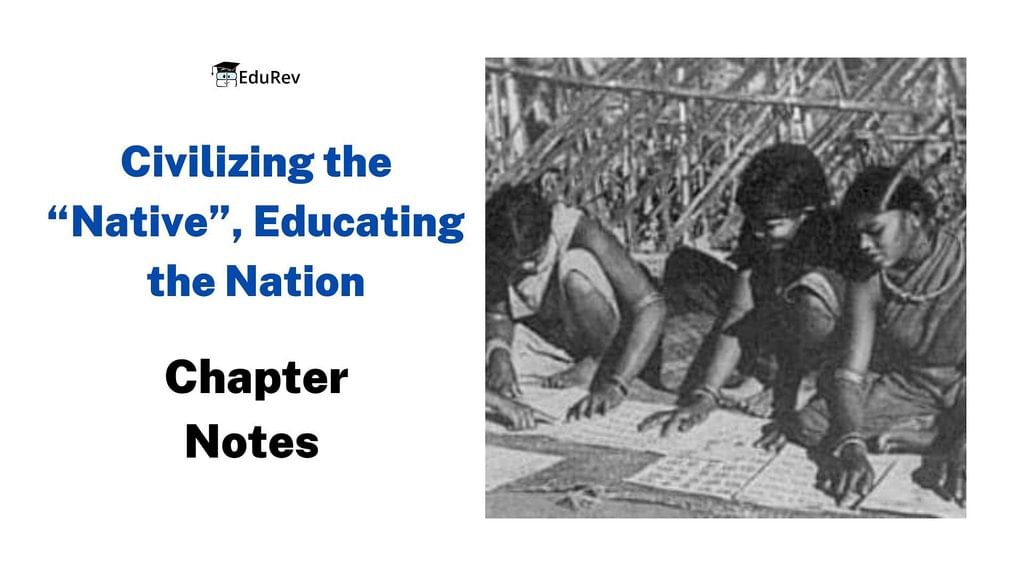
How the British saw Education?
Let's understand about British educational ideas and their impact on India over the last two hundred years, as well as how Indians responded and formed their own educational views.
The Tradition of Orientalism
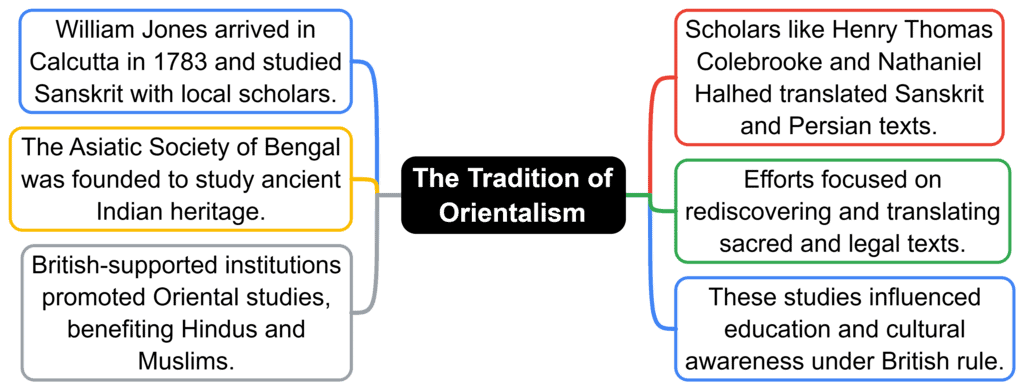
1. Arrival of William Jones in Calcutta:
- William Jones arrived in Calcutta in 1783 as a junior judge at the Supreme Court.
- He was skilled in several languages, including Greek, Latin, French, English, Arabic, and Persian.
- With the help of local scholars, he studied the Sanskrit language, grammar, and poetry.
2. Scholars' Interest in Ancient Indian Heritage:
- Henry Thomas Colebrooke and Nathaniel Halhed were scholars who admired both Indian and Western ancient cultures.
- They mastered Indian languages and translated Sanskrit and Persian texts into English.
- Along with Jones, they founded the Asiatic Society of Bengal and began publishing the journal Asiatick Research.
3. Rediscovering Ancient Texts:
- Jones and Colebrooke believed Indian civilisation had its peak in ancient times but had since declined.
- To understand India better, they aimed to uncover sacred and legal texts from ancient periods.
- They worked on discovering, translating, and sharing these ancient texts.
- This effort was intended to help the British learn from Indian culture and assist Indians in reconnecting with their own heritage.
Henry Thomas Colebrooke was a scholar of Sanskrit and ancient sacred writings from both Indian and Western cultures.
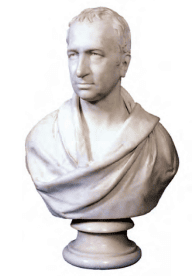 Henry Thomas Colebrooke He was a scholar of Sanskrit and ancient sacred writings of Hinduism.
Henry Thomas Colebrooke He was a scholar of Sanskrit and ancient sacred writings of Hinduism.
4. Purpose and Impact of the Project:
- The project aimed to help Indians reconnect with their heritage and understand the lost glories of the past.
- East India Company officials supported the study of ancient Indian texts, Sanskrit, and Persian literature and poetry.
- Institutions like the madrasa of Calcutta in 1781 and the Hindu College in Benaras were established in 1791 to promote these studies.
5. Significance for Hindus and Muslims:
- The aim was to educate Hindus and Muslims in subjects they held in high regard.
- Hindus were motivated to explore Sanskrit texts, while Muslims concentrated on Arabic, Persian, and Islamic law.
Through the study of Orientalism, we can understand how scholars like Jones, Colebrooke, and Halhed worked to rediscover India's ancient heritage and the influence their efforts had on education and cultural awareness during British rule in India.
‘Grave Errors of the East'
- Early 19th century: British officials criticize Orientalist version of learning
- James Mill attacks Orientalists
- Believes education should teach useful and practical subjects
- Advocates for Indians to learn scientific and technical advances from the West - Thomas Babington Macaulay criticizes Orientalists
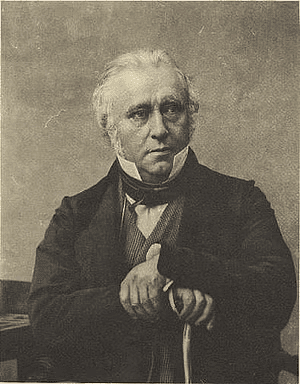 Thomas Babington Macaulay- Views India as an uncivilized country in need of civilization
Thomas Babington Macaulay- Views India as an uncivilized country in need of civilization
- Emphasizes the importance of teaching the English language - English Education Act of 1835 introduced following Macaulay's suggestions
- English made the medium of instruction for higher education
- Promotion of Oriental institutions stopped
Education for Commerce
- In 1854, the East India Company's Court of Directors issued Wood's Despatch, an educational directive for India.
- Written by Charles Wood, the Despatch highlighted the practical benefits of European education over Oriental knowledge.
- European education was viewed as a means to help Indians understand the importance of trade, commerce, and resource development.
- It was believed that adopting European ways would change Indians' tastes, desires, and moral character.
- The literature from the East was seen as flawed and incapable of instilling a sense of duty or the skills needed for administration.
- To implement Wood's Despatch, education departments were created to manage all educational matters.
- Steps were taken to establish a system of university education.
- In 1857, as the sepoys revolted in Meerut and Delhi, universities were founded in Calcutta, Madras, and Bombay.
- Reforms were also introduced in the school education system to align with Wood's Despatch goals.
What happened to the Local Schools?
The report of William Adam
- In the 1830s, Scottish missionary William Adam toured Bengal and Bihar districts.
- He was assigned by the company to report on vernacular school education progress.
- He discovered that the education system was flexible, with local schools called Pathshalas.
- Features of Pathshalas included: no fixed fees, no printed books, no separate school buildings, no benches or chairs, no blackboards, no separate classes, no roll-call registers, no annual examinations, and no regular timetables.
- The teaching process was primarily oral, with gurus deciding what to teach based on students' needs.
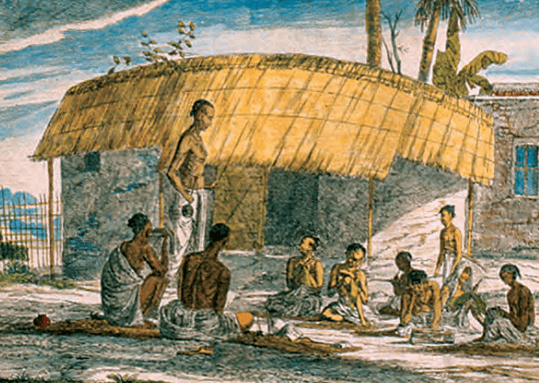 Village Pathshala
Village Pathshala
New Routines, New Rules
- Post-1854, the company aimed to improve vernacular education by introducing structure, routines, rules, and regular inspections.
- Government-appointed pundits were assigned to oversee four to five schools each.
- Education was to rely on textbooks, with annual examinations for assessment.
- The new system enforced regular school attendance, even during harvest time, viewing absences as a lack of desire to learn.
- Pathshalas complying with the new regulations received government grants.
The Agenda for a National Education
- British officials were not the only ones concerned about education in India.
- From the early nineteenth century, many thinkers across India discussed the need for broader education.
- Inspired by developments in Europe, some Indians believed that Western education would help modernise India.
- They urged the British to establish more schools, colleges, and universities, and to invest more in education.
- However, some Indians opposed Western education, including Mahatma Gandhi and Rabindranath Tagore.
"English Education has enslaved us"
- Mahatma Gandhi believed that colonial English education instilled a sense of inferiority in Indians, which he considered sinful and enslaving.
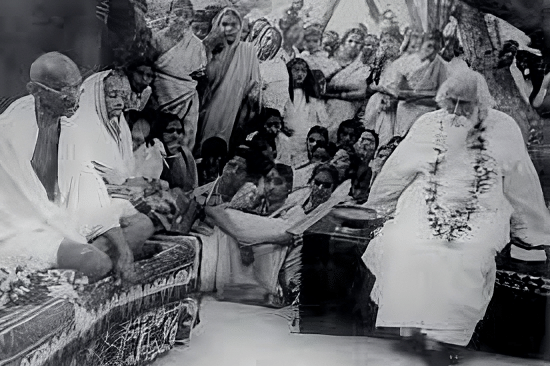
Mahatma Gandhi along with Kasturba Gandhi sitting with Rabindranath Tagore and a group of girls at Santiniketan, 1940
- He argued that this type of education cast an evil spell on the Indian population.
- Gandhi advocated for an education system that would restore Indians' sense of dignity and self-respect.
- He emphasized the importance of using Indian languages as the medium of instruction in order to develop an individual's mind and soul.
Tagore’s ‘Abode of Peace’
- Santiniketan was established by Rabindranath Tagore in 1901.
- Tagore’s dislike for traditional schooling, which he found suffocating and oppressive, influenced his educational philosophy.
- He Imagined a school where children could be happy, free, and creative, allowing them to explore their own thoughts and desires.
- Tagore believed that traditional schools stifled children’s natural creativity and sense of wonder.
- He emphasized the importance of creative learning in a natural environment and chose a rural setting, 100 kilometers away from Calcutta, for Santiniketan.
 A Class in Progress at Shantiniketan in the 1930s
A Class in Progress at Shantiniketan in the 1930s - Santiniketan, meaning "abode of peace," aimed to harmonize with nature and nurture children’s creativity.
- Tagore and Mahatma Gandhi had similar views on education, but they differed in their approaches.
- Gandhi was critical of Western civilization, while Tagore sought to blend modern Western elements with the best of Indian tradition.
- Tagore’s curriculum at Santiniketan included science, technology, art, music, and dance.
- There was a broader debate among Indian thinkers about creating a national educational system, with varying opinions on what constituted “national education.”
- The debate on the nature of national education continued even after independence.
Historical Timeline of Education in India
- 1783: William Jones arrived in Calcutta.
- 1781: A madrasa was established in Calcutta to encourage the study of Arabic, Persian, and Islamic law.
- 1791: Hindu College of Benaras was founded to promote the study of ancient Sanskrit texts beneficial for the country's administration.
- 1835: Following Macaulay's minute, the English Education Act of 1835 was enacted, making English the medium for higher education.
- 1854: Wood's Despatch was issued.
- After 1854: The company decided to enhance the system of vernacular education.
- 1857: During the sepoy rebellion in Meerut and Delhi, universities were established in Calcutta, Madras, and Bombay.
- 1901: Rabindranath Tagore founded the Institution of Shantiniketan.
|
69 videos|556 docs|46 tests
|
FAQs on Class 8 History Chapter 6 Notes - Civilising the “Native”, Educating the Nation
| 1. How did the British view education in their colonies? |  |
| 2. What is Orientalism and how did it influence British education policies? |  |
| 3. What happened to local schools during British colonial rule? |  |
| 4. What was the agenda for national education in British India? |  |
| 5. What were some important dates in the history of education during British rule? |  |





















